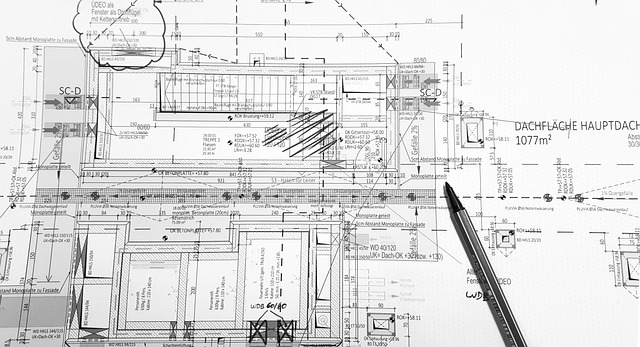A carefully considered floor plan is essential when planning any kind of space, be it a house, workplace, or commercial building. Your space’s floor plan acts as its blueprint, assisting you in seeing how everything will go together. A floor plan used to need to be created by an architect or designer. But as technology has developed, floor plan software has become more widely accessible, making it simpler than ever for anybody to design floor plans that seem professional.
Benefits of Using Floor Plan Software
Using floor plan software for your design tasks has several advantages. First of all, it provides unparalleled convenience. You can easily create, update, and share your designs with floor plan software. The days of creating floor plans by hand or engaging an expert to do it are long gone. You may quickly and easily obtain a comprehensive floor plan by just a few clicks.
Second, floor plan software makes it possible to be more imaginative and experimental. It is simple to experiment with various layouts, furniture configurations, and color palettes to see what suits your room the best. Because of this flexibility, you can see the big picture and make well-informed judgments before making expensive mistakes.
Trends in Floor Plan Software for 2024
The world of floor plan software is changing quickly as 2024 approaches. Numerous patterns are reshaping the sector and impacting the creation of novel attributes and capabilities. The incorporation of machine learning (ML) and artificial intelligence (AI) into floor plan software is one of the prevailing trends.
Algorithms using AI and ML may assess user preferences and make recommendations for intelligent design. Floor plans may be automatically generated by this technology depending on predetermined parameters, including room measurements, furniture arrangement, and traffic flow. AI-powered floor plan software allows designers to produce amazing results with less time and effort.
Key Features to Look for in Floor Plan Software
The essential characteristics that will simplify and expedite your design process should be taken into account while selecting the finest floor plan software for your requirements. The following are some crucial attributes to search for:
- Interface that is easy to use: Even for novice users, a decent floor plan program should have an easy-to-use interface. Seek for applications that provide a range of design tools, configurable templates, and drag-and-drop capabilities.
- Personalization choices: It’s essential to have the option to alter your floor layouts. Seek for software that lets you change the layout of rooms, add fixtures and furniture, and alter design aspects to meet your unique requirements.
- 3D modeling and visualization: Seeing your floor plans in three dimensions may make a big difference in how well your design is done. See your area from various viewpoints and angles by looking for software that has realistic 3D rendering capabilities.
- Collaboration and sharing: These are crucial aspects whether you’re working in a group or asking clients for input. Seek for software that provides simple sharing options and enables numerous people to work on the same project at once.
- Combining one piece of software with another: Think about how well the floor plan software interacts with your other design tools and programs. Your efficiency and productivity can be increased by integrating with applications like virtual reality platforms and CAD software.
Pros and cons of each floor plan software
Although every floor plan software option has a unique set of benefits and drawbacks, the following is a general summary of what to expect:
AutoCAD Architecture
Pros:
- strong design capabilities in 2D and 3D
- vast collection of items and resources
- sophisticated drafting and record-keeping instruments
Cons:
- steep learning curve inexperienced people
- High license costs
SketchUp
Pros:
- Interface that is easy to use
- strong modeling instruments
- vast collection of extensions and plugins
Cons:
- restricted ability to draft in two dimensions
- Not as appropriate for intricate architectural undertakings
RoomSketcher
Pros:
- Simple and convenient fix
- Real-time sharing and cooperation
- Integration of virtual reality
Cons:
- fewer sophisticated features than in other software
- has to have a reliable internet connection.
Revit
Pros:
- enhanced capacities for 3D modeling and visualization
- Automated documentation and parametric design
- Using BIM in complicated projects
Cons:
- steeper learning curve than that of other programs
- Increased expenses for training and licensing
The floor plan software you select will ultimately rely on your needs, expertise level, and financial constraints. To make an informed choice, carefully weigh these advantages and disadvantages.
Tips for Using Floor Plan Software Effectively
These are some things to think about in order to get the most out of your floor plan software:
- Prepare in advance: Give your design some thought and preparation before launching the software. Make sure you have a clear idea of your goals and collect any relevant reference documents or measurements.
- Try new things and keep trying: Don’t be scared to try out various layouts, furniture configurations, and design components. With floor plan software, you may quickly revise and refine your design until you’re happy with it.
- Make use of the resources provided by the software: Make use of the user manuals, tutorials, and online forums. With the use of these resources, you may discover new methods, solve problems, and get ideas from other people.
- When creating a room: Take ergonomics and functionality into account.The layout’s ergonomics and functionality should be taken into account. Make sure the design fits the space’s unique requirements, that there is adequate room for mobility, and that the furniture is arranged thoughtfully.
- Seek input and work together: Don’t be afraid to ask friends, clients, or coworkers for their opinions. Working together may improve your design process and provide better outcomes.
These pointers will help you get the most out of your floor plan software and produce designs that are both aesthetically pleasing and useful.
Conclusion
To sum up, floor plan software has developed into a vital resource for anybody engaged in space planning. It provides ease of use, adaptability, and an abundance of features to enable you to realize your idea. You may select the finest floor plan software for your requirements by taking into account user reviews, price alternatives, essential features, and trends.
Don’t forget to prioritize features that allow for collaboration, customization, 3D modeling, and interaction with other design tools. Remember to use user reviews and ratings as well to gather feedback from actual people.


